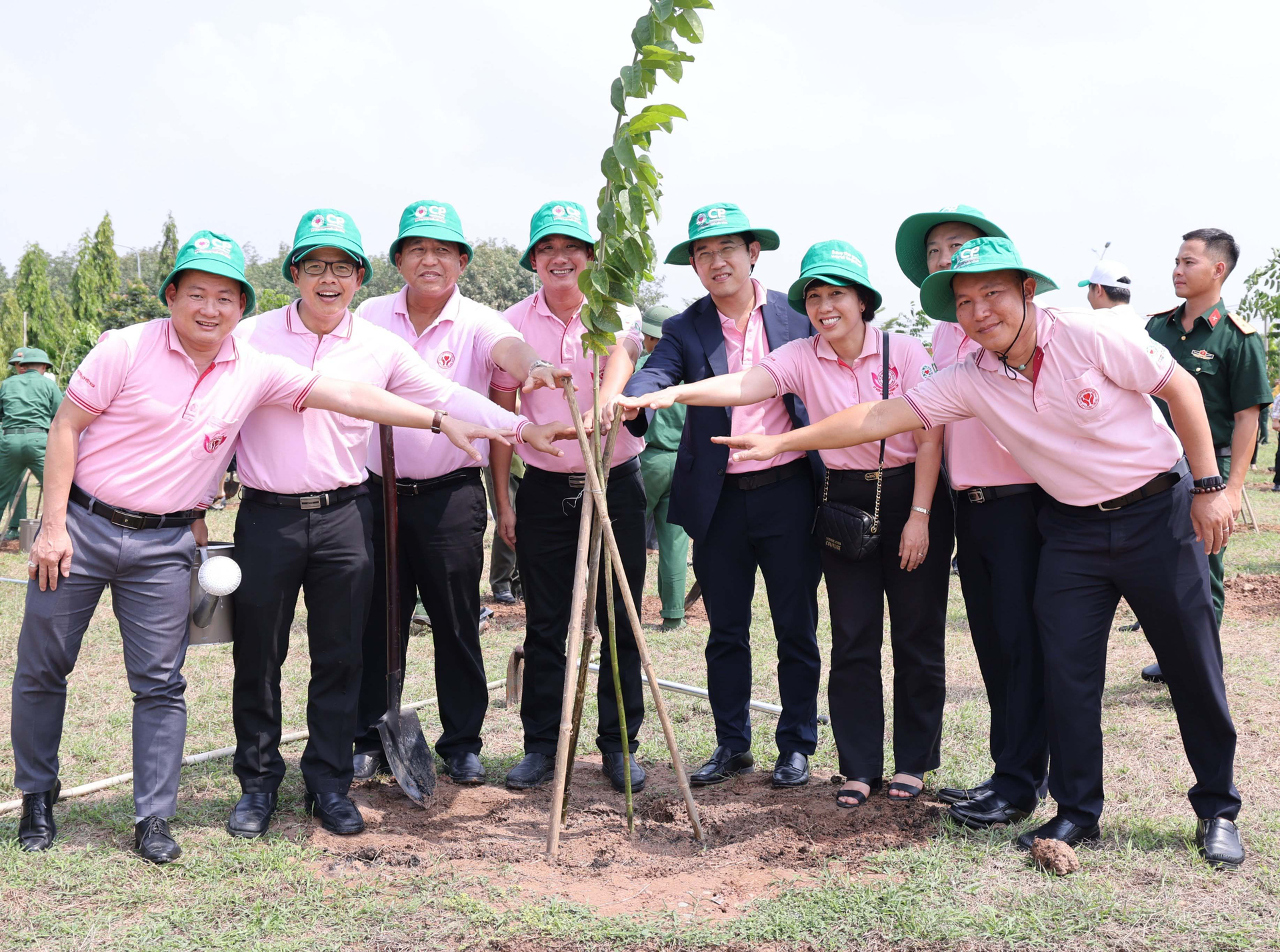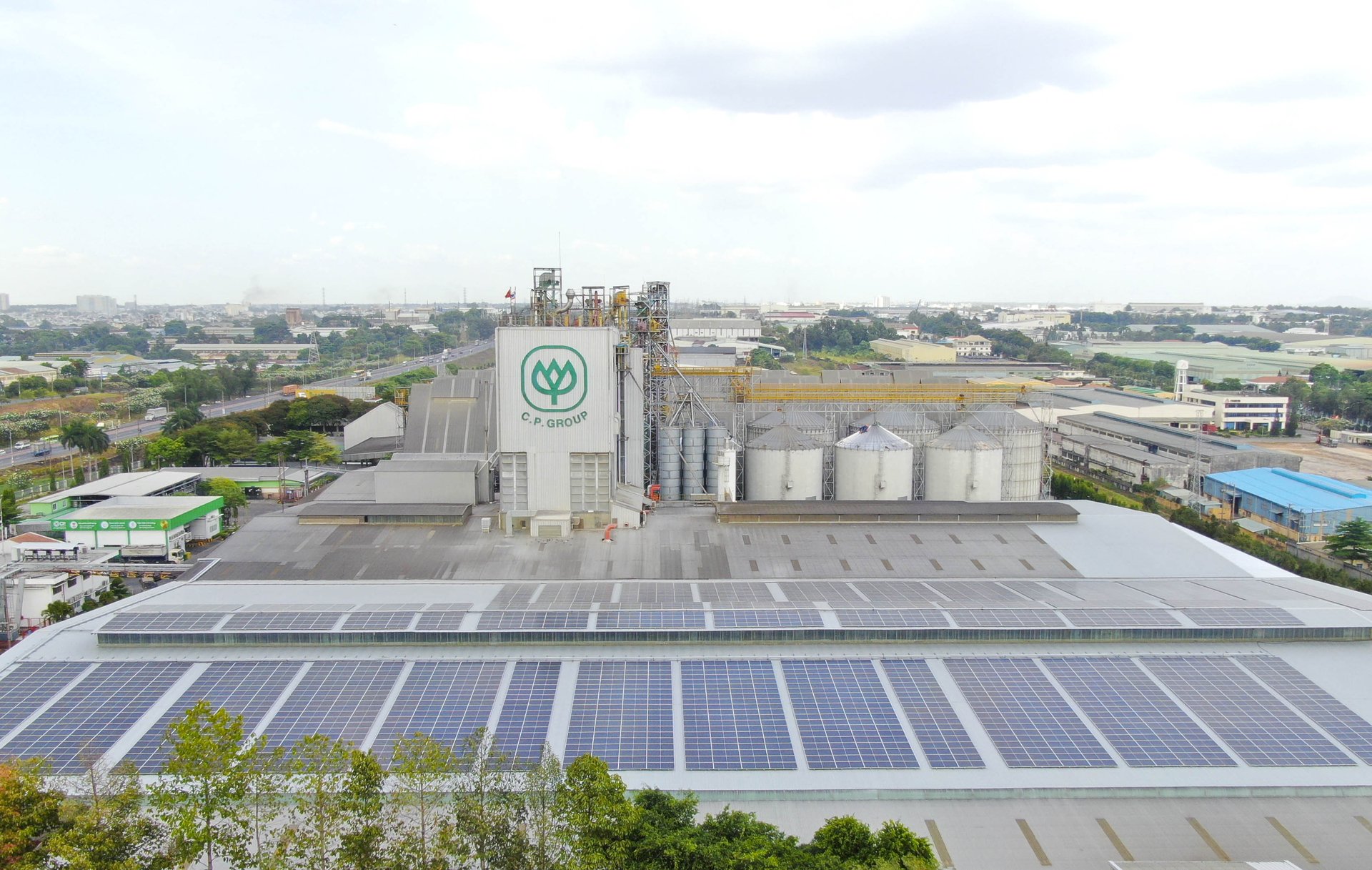May 24, 2025 | 16:24 GMT +7
May 24, 2025 | 16:24 GMT +7
Hotline: 0913.378.918
May 24, 2025 | 16:24 GMT +7
Hotline: 0913.378.918

C.P. Vietnam is planting 1.5 million trees across the country. Photo: Thanh Son.
As a leading livestock industry enterprise, C.P Vietnam Livestock Joint Stock Company has developed and implemented the company's sustainable development strategy for many years.
In production and business activities, C.P. Vietnam has always been consistent with the goals of harmonious development and sustainable economic growth associated with implementing responsibilities to society, the community, and environmental protection. Specifically, C.P. Vietnam has integrated sustainable development goals into practice, concretizing 3 pillars of the company's sustainable development strategy: Food security, Self-sufficient society, and Natural balance.
Jirawit Rachatanan, Senior Vice President of C.P. Vietnam, said to implement the natural balance, C.P. Vietnam has built the model "Green farm". This model not only creates a biosafety buffer zone, greening bare land but also contributes to forming a fresh and comfortable environment for employees working on the farm.
Accordingly, the focus is managing land and water resources at C.P. Vietnam's livestock farms and applying the circular economy. Typically, water reuse from livestock activities uses biogas generators to replace electricity at peak hours.
In addition, the "Green Farm" model helps protect the environment and climate by planting trees to green open vacant land, creating a healthy environment for employees, reducing the greenhouse effect, and recycling livestock waste (feces, wastewater) efficiently.
Up to now, all farms of C.P. Vietnam have succeeded in building the "Green Farm" model. The birth of the "Green Farm" model affirms C.P. Vietnam's determination on the business's sustainable development path.

Volunteers of C.P. Vietnam participate in mangrove planting. Photo: Thanh Son.
As an agro-food manufacturing company, C.P. Group is aware of its role in contributing to the responsibility of addressing climate change. Accordingly, C.P. Group has set a common goal of reducing CO2 emissions to zero by 2030.
According to the Group's policy, C.P. Vietnam has implemented tree-planting activities in many localities and at the company's factories and farms over the years. The company started the afforestation project in Can Gio mangrove forest (HCMC) in 2018. After that, the company expanded the project of planting mangroves in Bac Lieu province and coordinated with Dong Nai World Biosphere Reserve to grow and enrich more than 1 ha of forest in Ma Da commune, Vinh Cuu, Dong Nai.
In particular, in response to the call to plant 1 billion trees by the Prime Minister of Vietnam in 2021, C.P. Vietnam has implemented the project "CPV - Journey for a Green Vietnam" from 2021 to 2025 to plant 1.5 million trees for Vietnam, with a budget of more than US$ 1 million.
The project started by planting 500 thousand trees at the company's factories and farms. Then spread the remaining 1 million trees to the community in many provinces and cities in Vietnam. In 2021, the company planted 177,000 trees on 40 hectares of mangroves and donated more than 31,000 scattered trees for planting in Ben Tre province.
As of 2022, the number of trees that C.P. Vietnam has implemented more than 500,000 trees, in an area of more than 700ha, in the provinces of Ben Tre, Thua Thien - Hue, Bac Lieu, Dong Nai, Can Gio district (HCMC), and at farms and factories.
This year, C.P. Vietnam continues to expand its tree planting project in Dong Nai province to plant and take care of 10 hectares of mangroves. In Dong Thap province, the company will grow and take care of nearly 116 thousand cork oak trees in 107 riverbanks, canals, and canals at risk of landslides in 30 communes in Cao Lanh, Lap Vo, Lai Vung, and Chau districts and Sa Dec City.

Solar panels installed on the roof of a factory in C.P. Vietnam. Photo: Thanh Son.
To demonstrate its commitment to environmentally responsible business practices, over the years, C.P. Vietnam has also applied the Group's "Sustainable Packaging Policy" with the goal that by 2030, all food packaging can be recycled, reused, and compostable and eliminated all problematic packaging or unnecessary plastic packaging.
According to statistics from CPV's purchasing department, by the end of 2020, the company's plastic reduction activities in the food production and business industry have achieved 99.8% of food packaging that can be recyclable, reusable, and compostable. Only 0.2% of plastic packaging has compounds that are difficult to recycle.
Besides, to reduce packaging waste in production and business activities, C.P. Vietnam has been applying large containers to transport animal feed to farms, replacing packaging made from plastic. The company also uses reusable Q-pass and V-plus containers to transport shrimp seed from farms to consumers instead of non-biodegradable plastic bags.
In CPV's food production plants, plastic bags are not used for transportation in the production line but are replaced with plastic baskets and stainless steel trays that can be cleaned and reused. At stores like Freshmart, and Five Star, C.P. Vietnam uses paper boxes to pack food to take away, cloth bags for employees to buy and reuse…
Also, to reduce greenhouse gas emissions, C.P. Vietnam is promoting using renewable energy, increasing resource efficiency in factories and farms, and, specifically, expanding the use of biomass fuels such as cashew shells, sawdust, and corn cobs for boilers to replace coal.
At pig farms, C.P. Vietnam applies a biogas system to convert waste and wastewater into biogas, generating electricity for daily production. Food processing plants use biogas from wastewater treatment systems as renewable energy to replace fuel oil in boilers.
In addition, some feed mills, farms, and food processing plants of the company have installed solar panels to generate electricity for production. CPV's renewable energy activities not only help businesses save costs but, most importantly, reduce carbon emissions into the environment, limiting energy consumption's greenhouse effect while promoting the trend of using renewable energy in the community.
C.P. Vietnam applies circular economy principles in waste management to minimize waste in the production process while optimizing resource use. Specifically, manure from livestock production, chicken coop floor lining materials, sewage sludge from water treatment, egg shells, and organic waste are composted into fertilizer and used to grow clean vegetables for the company's employees. Besides, livestock waste is also put into the biogas system to convert into methane gas to help generate electricity.
Translated by Ha Phuc

(VAN) The People's Committee of Tra Vinh province has approved an adjustment to the investment policy for the Green Hydrogen Plant project, increasing its area to approximately 52.76 hectares.
![Reducing emissions from rice fields: [2] Farmers’ commitment to the soil](https://t.ex-cdn.com/nongnghiepmoitruong.vn/608w/files/news/2025/05/05/dsc08881jpg-nongnghiep-140632.jpg)
(VAN) Clean rice cultivation model in Thuong Tan commune, Bac Tan Uyen district, is assisting local residents in achieving sustainable agriculture by substantially reducing costs, increasing productivity, and protecting the environment.

(VAN) At the conference to disseminate Resolution No. 68, AgriS introduced its digital agricultural ecosystem and reaffirmed its commitment to accompanying the Government in promoting private sector development and sustainable agriculture.

(VAN) 'Blue Ocean - Blue Foods' initiative is designed to restore marine ecosystems and establish sustainable livelihoods for local communities by cultivating a minimum of 1,000 hectares of cottonii seaweed in the first three years.
/2025/05/21/4642-3-112707_603.jpg)
(VAN) The V-SCOPE project has made direct contributions to three out of six pillars of the Comprehensive Strategic Partnership between Vietnam and Australia.

(VAN) Facing the threat of rabies spreading to the community, Gia Lai province urgently carries out measures to vaccinate dogs and cats on a large scale.

(VAN) Disease-free livestock farming not only protects livestock herds but also stabilizes production and livelihoods for many farmers in Tuyen Quang.